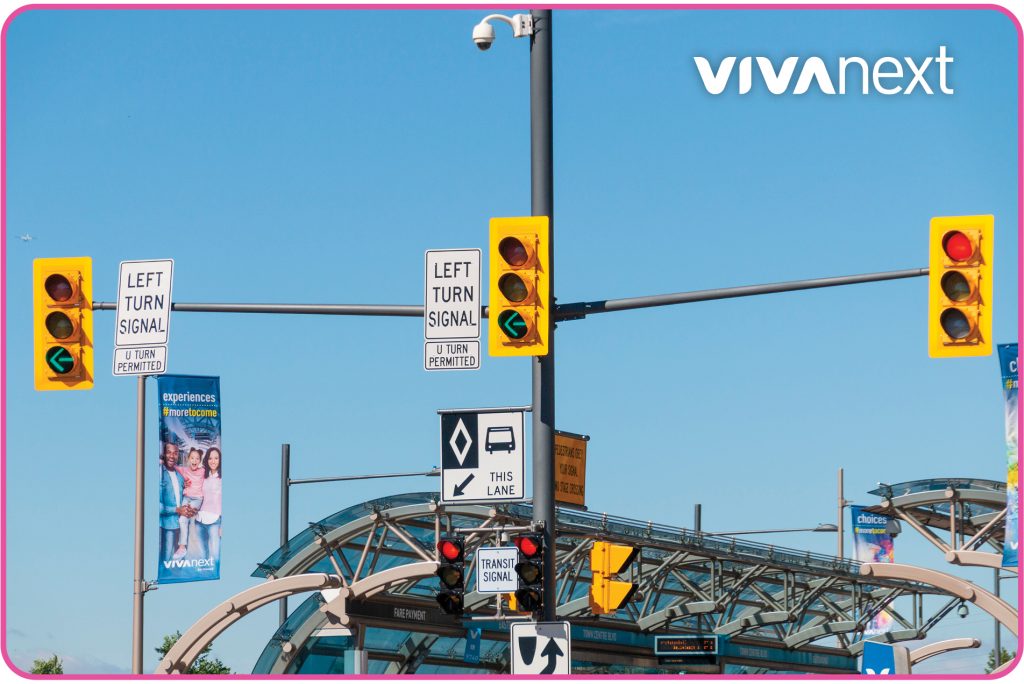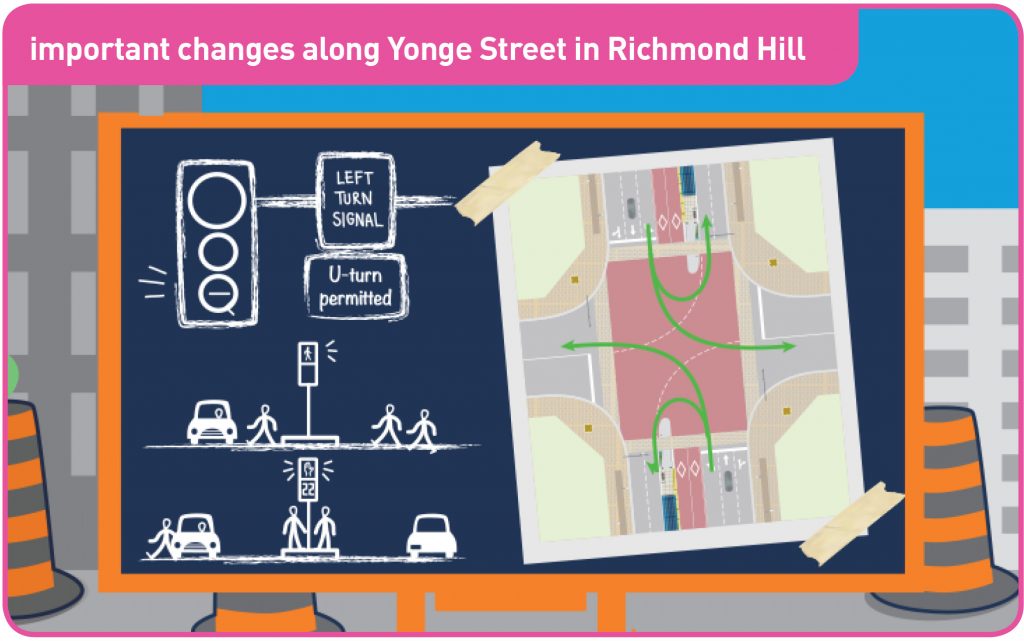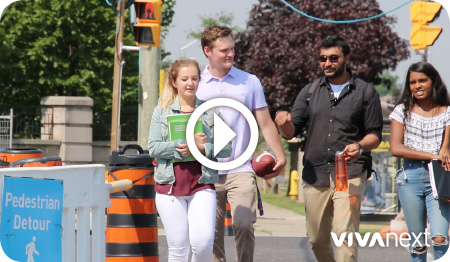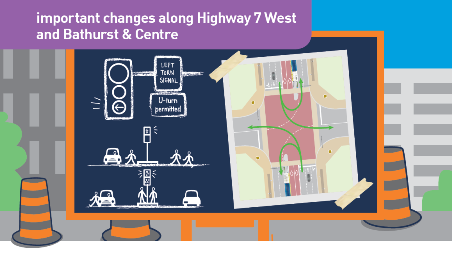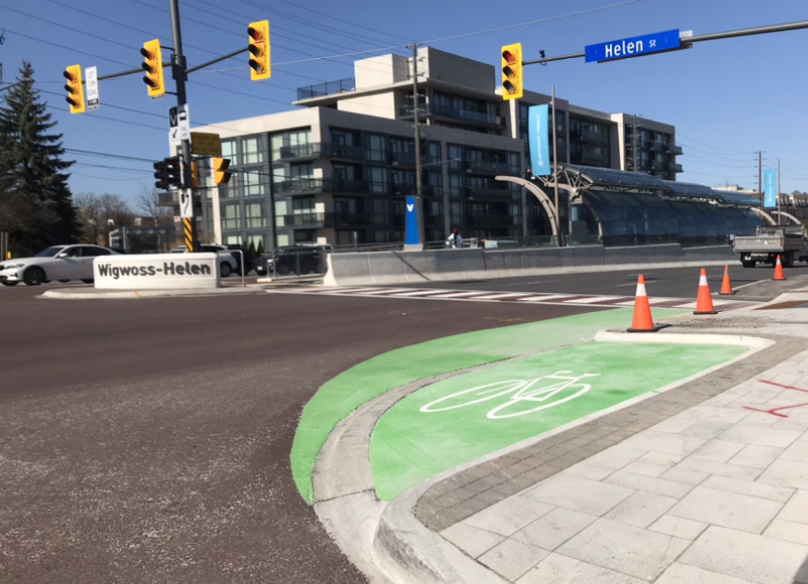
Crews are in the process of painting bike boxes on Highway 7 West and Bathurst & Centre in Vaughan, as well as on Yonge Street in Newmarket. Bike boxes [identified by their green paint] are spaces allocated at signalized intersections along the rapidway corridors that allow cyclists to safely wait for a signal when turning left. This is instead of waiting in the left-turn lane, making the rapidway corridors safer and more welcoming for cyclists. Here’s pretty much everything you’d want to know about them.
The purpose of a bike box
Bike boxes provide a safe left-turn option for cyclists riding in the bike lane. Rather than having to cross two or three lanes of busy traffic to reach left-turn lanes, or waiting on the sidewalk, the bike box is a safe, designated waiting area that’s tucked into the boulevard at the corner of a signalized intersection – just for bikes. Simply put, the bike box offers cyclists a place to wait for the light to change.
Here’s how they work
Cyclists wanting to turning left from, say for example, Highway 7, will proceed through the signalized east/west intersection in the bike lane. Then they simply stop in the bike box, turn their bike to the left, and wait for the next north/south signal. Once the light changes, they can cross Highway 7 along with other north/south traffic.
To learn more about how to use bike boxes, watch the “Cyclist Cedrick” segment of this video [0:58 mark].
How we build bike boxes
To accommodate bike box painting, crews close curb lanes and right-turn lanes at each intersection. Then, like bike lanes around intersections, they’re painted green with special bike lane markings to clearly identify them. Lanes remain closed for up to three days to allow the street bond to completely dry.
We’re excited to be providing these features for York Region cyclists, and know that they help to make the rapidway corridors more welcoming to all travellers, no matter how they choose to get around.
For information and updates about ongoing vivaNext projects, be sure to subscribe to email updates, and follow us on Twitter. You can also follow us on Instagram, YouTube and Facebook. Questions or comments? Comment below or email us at contactus@vivanext.com.

